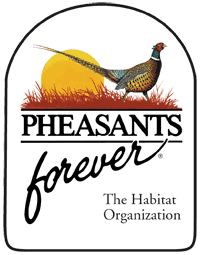ANNUAL REPORT: As Fierce Habitat Loss Storm Rages, Pheasants Forever’s Impact Grows
Pheasants Forever 01.14.14

PF permanently conserves 4,291 acres through acquisition; improves program efficiency
For the third consecutive year, Pheasants Forever spent more than $50 million on its wildlife habitat conservation and education mission. In 2013, $53.8 million mission dollars helped accomplish 13,281 wildlife habitat projects spanning 1.46 million acres – the highest annual acreage total in Pheasants Forever’s 31-year history. The year’s total pushes Pheasants Forever over the 10 million acre mark since the organization’s 1982 inception.
Long a hallmark of efficiency, Pheasants Forever, including its quail conservation division, Quail Forever, spends 91.6 cents of every dollar (up from 91.23 in 2012) it raises directly on mission work, with the remainder utilized for fundraising and administrative functions. In fact, Pheasants Forever continues to be recognized as a 4-star charity by Charity Navigator, the largest charity evaluator in the country.
However, Pheasants Forever recognizes that while the organization may be healthy, upland habitat across the country is disappearing at pace never before experienced. “Announcing these Annual Report numbers is bittersweet,” explains Howard Vincent, Pheasants Forever’s President and CEO. “I am extremely proud of our organization’s team, volunteers, and these milestones. We announce these Annual Report statistics as a way of demonstrating our organization’s credibility. What we need is more: members, landowner partners, corporate partners, donors, we need more people to join us as we compete with the pace of habitat loss.”
Nationwide: Habitat Loss and Land Management Policies and Programs
Approximately 1.6 million acres were removed from the federal Conservation Reserve Program (CRP) in 2013. With limited protections, native prairie loss has also accelerated. In South Dakota, for instance, native prairie conversion outpaces even the loss of CRP habitat. Marginal cropland and even environmentally-sensitive areas continue to remain susceptible to habitat loss because of federal crop insurance and disaster relief programs that mitigate the risk of farming these areas.
Pheasants Forever’s push for a strong conservation title in a new federal Farm Bill has carried into 2014. Pheasants Forever is working for a 5-year Farm Bill with strong conservation provisions, one that includes national Sodsaver (native prairie) provisions and crop insurance linked to conservation compliance.
Wildlife Habitat Projects
Pheasants Forever and Quail Forever chapter projects accounted for 465,488 acres of wildlife habitat improvement in 2013. Pheasants Forever Farm Bill Wildlife Biologists – who work with landowners to enroll in conservation programs – made 22,600 landowner contacts in 2013, resulting in 997,750 acres of wildlife habitat improvement.
Land Purchases / Permanent Wildlife Habitat Protection
Because of 55 land purchases in 2013, 4,291 acres of wildlife habitat have been permanently conserved by Pheasants Forever. Twenty-eight percent of Pheasants Forever’s 2013 program expenses were directed at purchasing land, and all these properties have or will be turned over to state or federal natural resource agencies and opened to public hunting and outdoor recreation.
Youth, Education & Public Awareness
Pheasants Forever and Quail Forever chapters held 904 youth events in 2013, including 697 youth shooting sports events. In the last year, 48,767 youngsters participated in chapter sponsored mentored youth hunts, target shoots or other youth/conservation events – also an organizational record.

